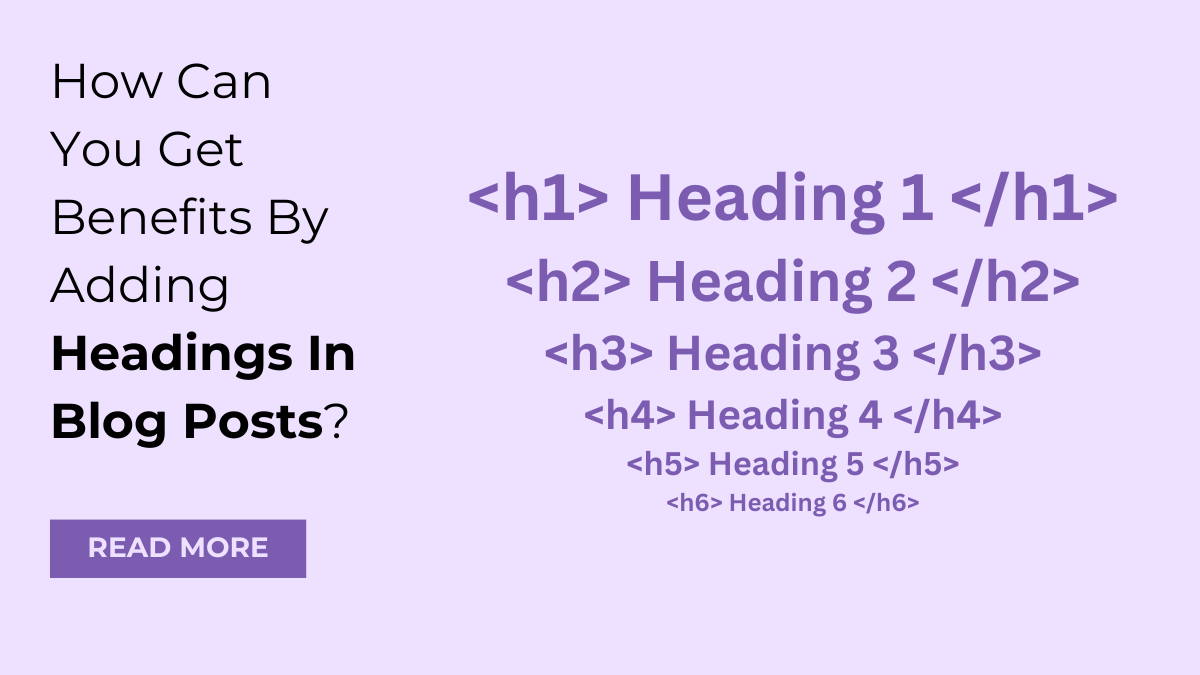It is one thing to create excellent contents for your blogs, but it is another thing to make it read by people and ranked in search engines. The concept of nailing the headings in blog posts applies here.
Headings are what make your content sell. Headings represent your blog posts in search engines, social platforms and in emails. Then, naturally, we come across common questions regarding crafting the headings in blog posts. So, below in this article, you will come across some of the basic questions with well chalked out answers related to blog posts headings.
What do you understand by “Headings”?
Headings are not a new concept and we are familiar with them since a long time. Generally, we see headings in the print world of books, newspapers, paperbacks, magazines, etc. Similarly, headings in web contents are used the way they have been in the above stuff. Headings break up the contents into more meaningful sections. But, when web publishing is concerned, the headings have more significant roles. Technically, the headings are nothing but the HTML heading tags that are inserted into the blog posts on the internet. They are highly responsive to catch the attention of the audience towards your web page.
Necessity of headings in blog posts
On giving a catchy heading to the blog post, the contents of the web page becomes more appealing, easy to understand and well sorted out. Such a blog post is always liked by the people who love blog reading. Moreover, such blogs become search engine friendly.
Parts up your post into different sections
To prevent the blog readers from leaving your post, you need to display your article in different portions. Nevertheless, it’s a human tendency to lose interest from long pieces of contents. However, when you break your content into small parts with headings, they are more likely to keep the readers engaged. It’s a fact that it is the entire design and structure of your blog post that decides how long will the reader stay on that blog. Hence, headings in blog posts are very useful and make the blogs worth reading.
How beneficial are headings for a blogger?
Everybody wants to catch the main subject around which the complete blog post is based. When you use headings to divide your blog post into different segments, the post becomes well compiled and crisp. See that the contents are relevant with the heading and subheadings and that they do not distract the reader away from the main topic.
Headings for quality and striking posts
Headings in your blogs do more than just making the reading process easy for the peruser. You can even formalize and add design touches to your blogs using heading in attractive colors, styles, and fonts. Thereby, the web viewers find your blog more striking.
They make the blog visually uniform and stable
Your blog contents get a stable appearance and uniform look with headings. Further, it’s a normal human behavior to look at the various web pages at a glance as people are well aware of the structure and look of the blogs. Properly organized blogs are more impressive.
SEO Requires Headings

Making the posts search engine friendly is the major motive behind splitting the contents and giving them headings. Headings are always valued by the search engines such as Google. Basically, the headings are used by the search engines to recognize what your post is all about. It helps in indexing the contents of your page.
Technically, web pages have 6 different HTML headings and they are H1, H2, H3, H4, H5, and H6. These headings get preference by Google, I.E., and other search engines. H1 heading gets the top value by Google. Mostly, the H1 and H2 tags are preferred for the blog’s SEO.
Few Instructions
To get the most out of headings in blog posts, certain guidelines need to be followed. See that the contents are relevant with the headings. Generally, a blog post is divided into paragraphs with 5 to 6 sentences in each para and proper headings given to them. But, the number of times the headings need to be used can be decided based on the policy and design of your website. It also depends upon the structure and nature of the blog post. Avoid using the same words to start every heading throughout the post. Keep the headings unique and easily distinguishable. Try to insert the keyword in most of the headings. Keywords are used to get improved SEO rankings.













